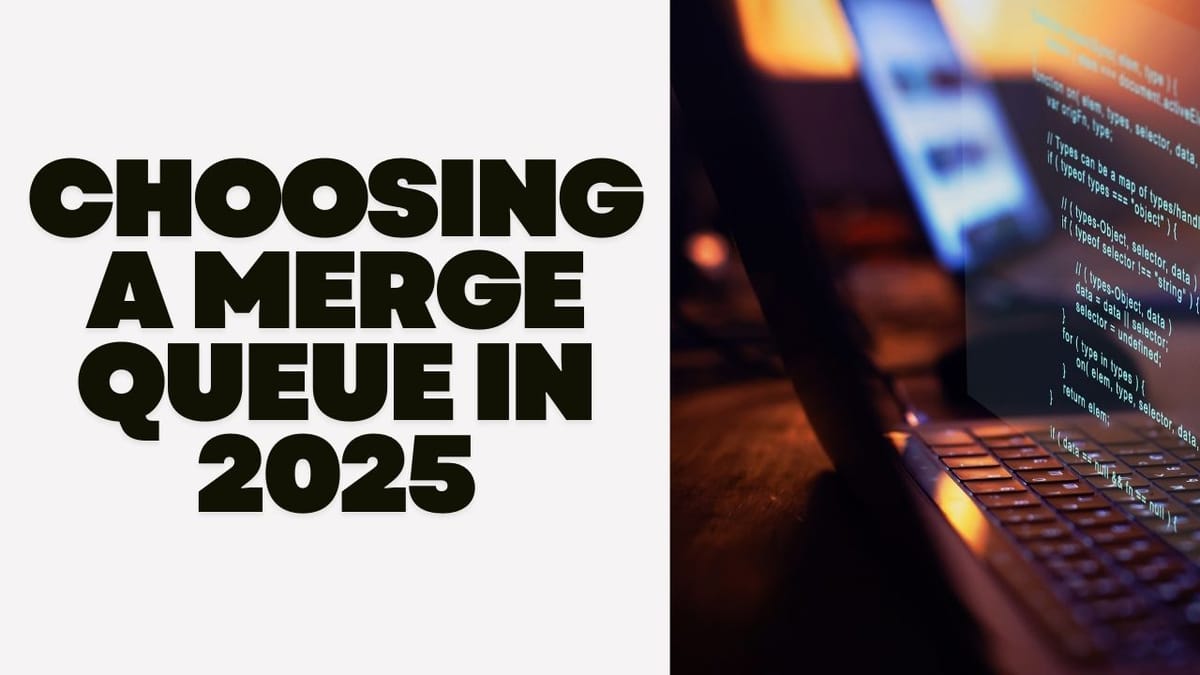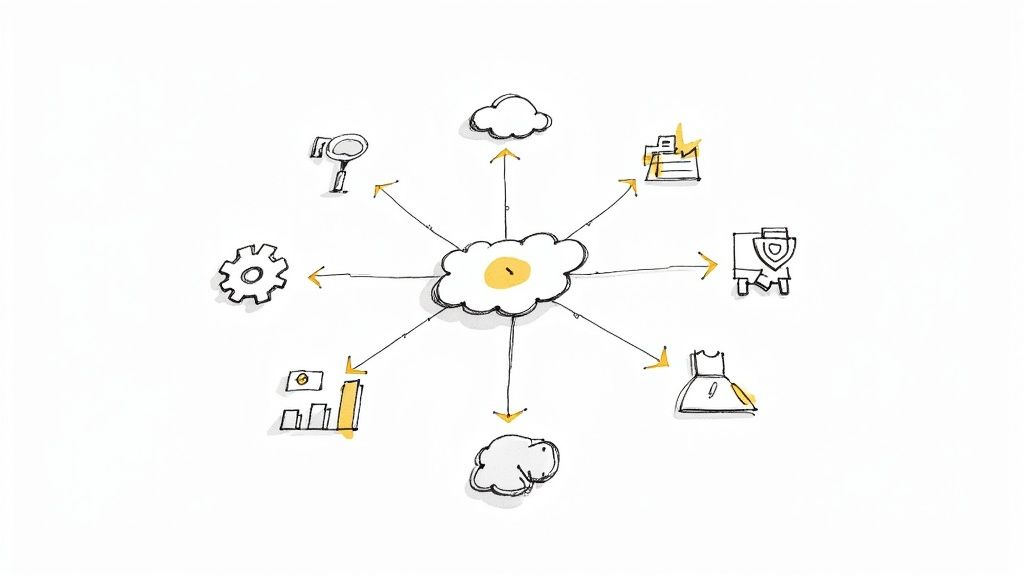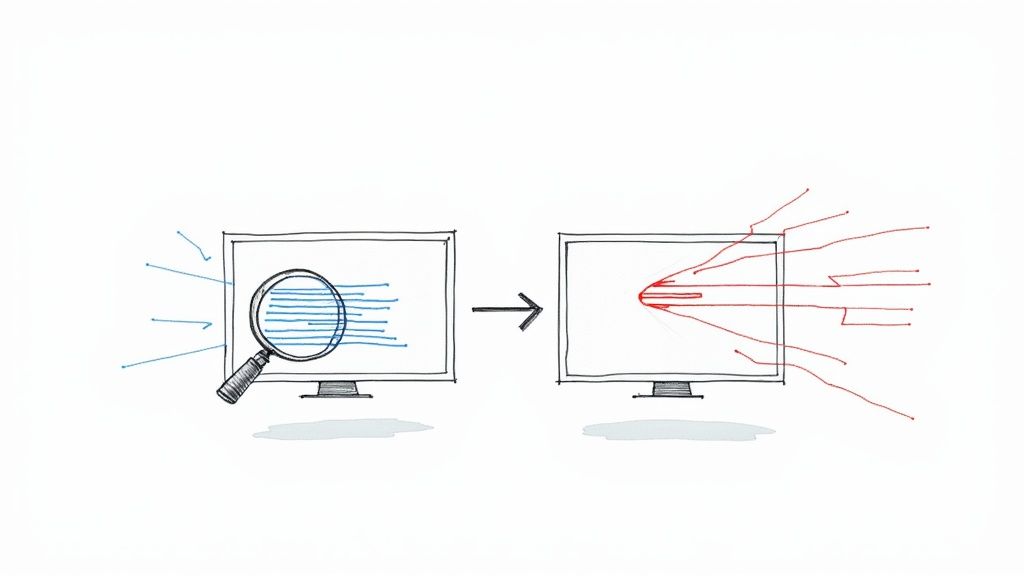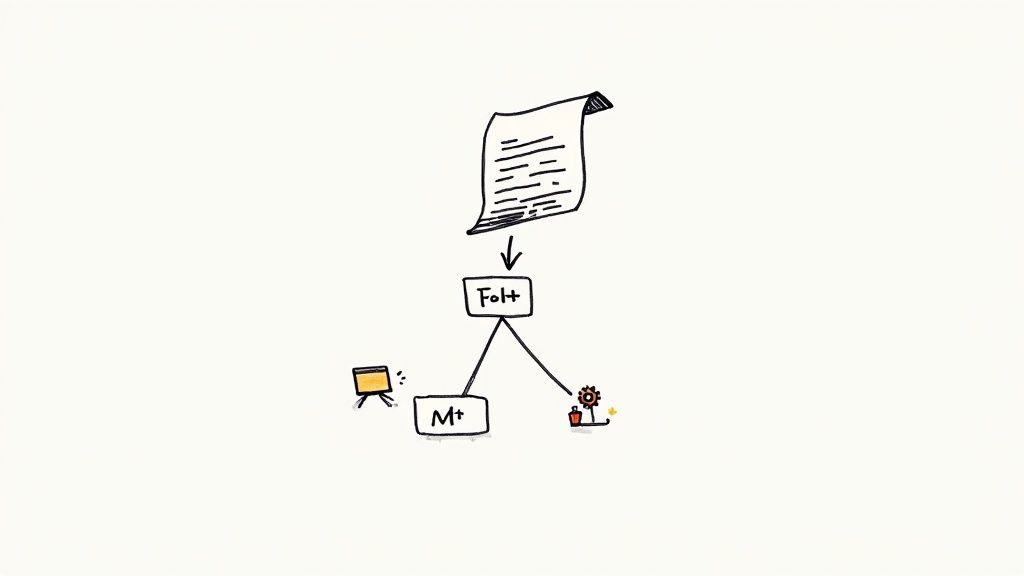Choosing a Merge Queue in 2025: Key Features and Considerations

As development teams continue to streamline their workflows, merge queues have emerged as an essential tool for ensuring code quality, especially in complex CI/CD environments. However, with a range of merge queue options available, how can teams select the best solution for their needs in 2025? Here’s what you should consider when evaluating a merge queue to enhance your workflow, keep your codebase stable, and optimize developer productivity.
Why a Merge Queue Matters
Merge queues address a critical problem in continuous integration: they ensure that code merged into the main branch is rigorously tested and up-to-date. Without a merge queue, pull requests can sit “stale”—they’ve been tested once, but as changes accumulate in the codebase, that initial test becomes outdated. The result is a “stealth merge,” where code that passed testing under an older state of the codebase is now merged without a current validation.
This can cause downstream CI issues, breaking workflows, causing costly reverts, and potentially impacting production. By re-testing each pull request just before it’s merged, a merge queue keeps the main branch deployable and reliable, giving teams confidence in every deployment.
Essential Features to Look for in a Merge Queue
Not all merge queues are created equal, and selecting the right one can make or break the efficiency of your CI/CD pipeline. Here are the most important features to look for in a merge queue solution:
1. Flexibility in Workflow Customization
One of the top considerations when choosing a merge queue is flexibility. Development teams need a system that allows them to configure the queue according to precise rules and triggers. This includes setting conditions for when a pull request can enter the queue and specifying rules for prioritizing different types of changes.
For example, a merge queue should offer the ability to prioritize critical hotfixes over standard updates, ensuring urgent changes reach production faster. This rule-based approach is invaluable for maintaining a predictable flow and keeping high-priority updates on track without disrupting the rest of the queue.
2. Optimization for Efficiency
A well-designed merge queue will recognize when a pull request has been recently tested and is already up-to-date. In such cases, re-running the tests can be redundant. A queue that skips unnecessary tests can save valuable CI time and reduce overall latency, which is especially important in larger teams with high pull request volume.
Beyond skipping redundant tests, effective optimization in a merge queue includes batching multiple pull requests for testing and merging, helping to maximize CI resources and ensure faster merges. Teams should look for solutions that support two-stage CI: lightweight tests first, followed by deeper, more comprehensive tests in the queue, to save time and resources.
3. Monitoring and Statistics
Monitoring capabilities are crucial for understanding and managing the performance of your merge queue. Statistics on queue length, throughput, and latency can highlight bottlenecks and allow teams to address any issues that impact productivity. Additionally, monitoring helps identify CI degradation before it disrupts workflow, ensuring the team stays productive.
Some advanced solutions offer timeout handling, where a pull request is automatically removed from the queue if its tests are stalled due to a CI failure. Without these features, a merge queue can easily become clogged, causing frustration among developers and delaying critical merges.

4. CI Hygiene and Flaky Test Management
A common issue teams face when implementing a merge queue is dealing with flaky tests. If tests fail unpredictably due to instability in the CI environment, a merge queue may amplify this problem by re-running tests on each pull request.
It’s essential to maintain a high standard of CI hygiene before adopting a merge queue. Teams should work to eliminate flaky tests, as these can lead to false negatives, where passing code is repeatedly blocked by test instability. A well-maintained CI pipeline ensures the merge queue functions smoothly and minimizes unnecessary delays for developers.
5. Integrations
Having a merge queue is great, but make sure it is integrated in your existing solutions. For example, getting Slack notifications when pull requests are entering the queue can be a very useful feature.
Limitations of Basic Merge Queue Solutions
While platforms like GitHub offer merge queues as part of their services, they may lack essential features and customization. For instance, GitHub’s Merge Queue does not offer the robust prioritization control many teams need. Developers can manually push a pull request to the front of the queue, but without a rules-based system, priority management is challenging and can lead to inconsistencies, especially in large teams.
Moreover, limited monitoring and optimization in basic merge queue systems can lead to stalled queues when CI issues arise. A comprehensive merge queue solution should integrate with various CI platforms, monitor for potential bottlenecks, and provide reliable timeout handling. Without these capabilities, development teams risk becoming stuck in lengthy queue backlogs, slowing down their workflows and impacting team morale.
Choosing a Merge Queue Solution with a Roadmap
In 2025, merge queue technology is still evolving. As you evaluate merge queue vendors, consider not only the current feature set but also the vendor’s roadmap and vision. Merge queues that integrate AI-driven prioritization and more advanced CI/CD optimizations are emerging, offering the potential to address complex workflows more intelligently.
Look for vendors who are committed to developing comprehensive solutions that connect merge queues with other critical parts of the development pipeline, such as flaky test management and CI issue handling. This forward-thinking approach can ensure that your merge queue solution grows with your organization’s needs and maintains alignment with best practices as the technology landscape evolves.
Final Thoughts
The right merge queue can transform your CI/CD pipeline, ensuring only reliable, up-to-date code reaches the main branch. As you select a solution in 2025, prioritize flexibility, efficiency, monitoring, and compatibility with your existing CI setup. A well-chosen merge queue will reduce bottlenecks, minimize errors, and empower your development team to focus on delivering quality code—confident that their work will deploy smoothly and effectively.
By investing in a merge queue that aligns with these considerations, development teams can secure a more efficient, resilient CI/CD pipeline that supports seamless collaboration and continuous deployment.
If you're looking to deploy a merge queue, try Mergify Merge Queue for free!




